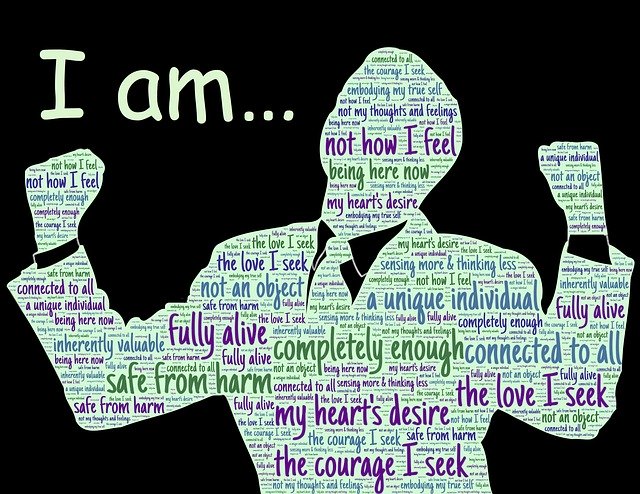How can we cultivate healthier habits of mind?
Why is it that certain people are vulnerable to lives “slings and arrows” while others appeared to be more resilient. More important how can we nudge people along that continuum to promote more resilience and through it well being.
We all respond differently to the challenges of life . There is strong variation in emotional reactivity and action. We can call this reactivity to challenges emotional styles.
To better understand emotional styles doctor Richard Davidson has come up with 6 dimensions of emotional styles and in the same way we engage in physical exercise to gain strength and flexibility, thru understanding and practice we can improve them in order to cultivate healthier habits of mind.
The 6 dimensions of Emotional Style are:
All six can be changed through intentional practice and simple exercises.

Attention
The ability to focus on specific thoughts, feelings, and sensations that enter our minds.
There are 2 types of attention we will showcase
Selective attention: Our ability to focus on one thing closely and ignore other things that may be happening at the same time.
Open non judgmental awareness: Ability to take in all that is happening around us including our thoughts and feelings that are popping up in our heads. Bring all these subtleties to bear at the same point in time without getting fixated on anyone of them.
Spectrum

How can you improve attention?
Mindful meditation technique like periodically just focusing on one object for a period of time (about 2 minutes) or by Focusing on your breathing for two minutes (body scan technique)
If you are the opposite and are hyperfocus and you want ot reduce it at any given time then open monitoring meditation where you focus on everything by being aware of everything around you can help.

Resilience
Our ability to bounce back from adversity or recover from those inevitable setbacks in life. Slow to recover can be vulnerable and can suffer from anxiety. Keeping in mind that there are normative recovery times that vary depending on the severity of the set back. It is those recovery times that vary from person to person that sets up this spectrum.
Spectrum

How can you improve resilience?
1] try mindfulness of breathing technique (See Below)
2] try cognitive reappraisal training (See Below)
When you have too much resilience you could slough off real problems leaving them to linger and to worsen. As well as you can possibly lack empathy and compassion.
To lower resilience think about something bad and write down the difficult and negative feelings that you are having and read them over and over again. In other words try to put yourself in the situation of suffering.

Outlook
A person's point of view or general attitude to life.
You have those individuals who always walk around with a genuine smile that you love to be around because they lift you up. And those always frowning that you want to run away when you see them coming.
Spectrum

How can you improve outlook?
Counter intuitive, to strengthen outlook try resisting immediate rewards and opt for smaller longer term goals (Delayed Gratification).
For example if you feel the urge to go shopping, then go, but don't take money with you . Just look at all the merchandise and think of all the money that you are saving by not buying anything.
Another way is to surround yourself with photos of loved ones and listen to music you really enjoy.
There can also be too much positive outlook which can lead you to have trouble seeing legitimate mistakes. No matter how severe the problem is, you believe everything will be OK, and not deal with it. Too much “pie in the sky” and not enough “steak on the plate”.
To decrease outlook, I know it sounds like a bummer, but imagine negative outcomes and dwell on them. Let's say you are tempted to buy a motorcycle, write down all the things that can go wrong and reflect on them for awhile. This can help dim your outlook in a situation where it is important to decrease it.

Social Intuition
Our ability to read other people’s nonverbal signals (body language, facial micro expressions, vocal tones, etc) their “vibes”.
For example, Have you ever been in a situation where someone is talking to you and you have tried to give indication that you need to do something else and they are oblivious of it.
I once literally turned my back on someone and started typing on my keyboard yet they still kept on talking for an additional 2 minutes.
Spectrum

How can you improve social intuition?
To increase social intuitiveness study and pay attention to the social interactions of strangers. Look at facial expressions of people deep in conversation. Notice if they are making physical contact and for how long. listen to the tone of their voice and volume. Observe whether it matches their facial expressions.
To lessen social intuition simply avoid eye contact when you deal with people.

Self Awareness
The ability to read signals our body is sending us.
You think you are doing fine and then someone comes over and ask if you are OK. They ask this because you look stressed out and anxious, and you realize that you actually are stressed out but you didn’t realize it. This is an example of being self-opaque.
On the high side some people actually sends and take on the pain, anxiety, and stress of others all the time to the point they become emotionally burnt out.
Spectrum

How can you improve self awareness?
The way you both increase and decrease self awareness is through mindfulness meditation. Mindful Meditation will help us to allow in all feelings and emotions without judgment and helps center us and be more moderate than extreme.

Sensitivity to Context
The ability to regulate how we act in social situations and pick up on the natural rules of social interactions that are appropriate for a specific context. Think of this as the emotional style that allows you to project outwardly unto others and unto your environment.
The way you deal with loved ones, friends, coworkers, and strangers at different times should be different. This is not being inconsistent it's being sensitive to context.
Spectrum

How can you improve sensitivity to context?
Once again. Like Self-Awareness, you can increase/decrease this dimension using the same techniques.
For building internal cues to Sensitivity to Context use mindfulness meditation just like for sensitivity to context.
For building external cues use Sensitivity to Context use the observation of strangers as shown in building Social Intuitiveness.
Mindfull Breathing
Is observing and opening your awareness to your breath: to your breathing in and your breathing out, without controlling or judging it in any way: letting it be.
1) Choose a down time location and or time.
2) Start by breathing in and out slowly.
3) One breath cycle should last for approximately 6 seconds.
4) Breathe in through your nose and out through your mouth, letting your breath flow effortlessly in and out of your body.
5) Let go of your thoughts. Let go of things you have to do later today or pending projects that need your attention. Simply let thoughts rise and fall of their own accord and be at one with your breath.
6) Purposefully watch your breath, focusing your sense of awareness on its pathway as it enters your body and fills you with life.
7) Then watch with your awareness as it works work its way up and out of your mouth and its energy dissipates into the world.
8) Initially do this for approximately 2 minutes. Increase time as you do this exercise more.
Body Scan Meditation
Is a good way to release tension you might not even realize you're experiencing. Body scanning involves paying attention to parts of the body and bodily sensations in a gradual sequence from feet to head.
1) Get comfortable. Lying down is preferable, particularly if you're doing a body scan meditation before you fall asleep. If that's not possible or comfortable, sitting comfortably is also an option.
2) Take a few deep breaths. Let your breathing slow down, and start breathing from your belly instead of from your chest, letting your abdomen expand and contract with each breath. If you find your shoulders rising and falling with each breath, focus more on breathing from your belly, as though a balloon is inflating and deflating in your abdomen with each breath. For more practice, try these breathing exercises.
3) Bring awareness to your feet. Now slowly bring your attention down to your feet. Begin observing sensations in your feet. If you notice pain, acknowledge it and any thoughts or emotions that accompany it, and gently breathe through it.
4) Breathe into the tension. If you notice any uncomfortable sensations, focus your attention on them. Breathe into them, and see what happens. Visualize the tension leaving your body through your breath and evaporating into the air. Move on when you feel ready.
4) Scan your entire body. Continue this practice with each area of your body, gradually moving up through your feet until you reach the top of your head. Notice how you feel and where you're holding your stress. If there's any tightness, pain, or pressure, continue to breathe into any tightness, pain, or pressure you're feeling. This can help you release tension in your body now, and be more aware of it in the future so you can release it then, too.
Cognitive reappraisal
Is a way of framing your mind to adopt a detached attitude toward an activity, like a journalist who is reporting on it.
The technique is commonly used to help recognise negative emotions and to ultimately turn these into positive responses..
Cognitive reappraisal involves recognizing the negative pattern your thoughts have fallen into, and changing that pattern to one that is more effective. Changing the course of your thoughts, or how you’re making sense of things, can in turn change the course of your emotions, turning the dial down a couple of notches.
The simple act of shifting your perspective.
For example from
Oh no!
If I’m late to the party, everyone will be angry at me and no one will talk to me.
TO
Fantastic!
When i get there everyone will already be there and they will all scream "Heeeeeey!" when I walk in.